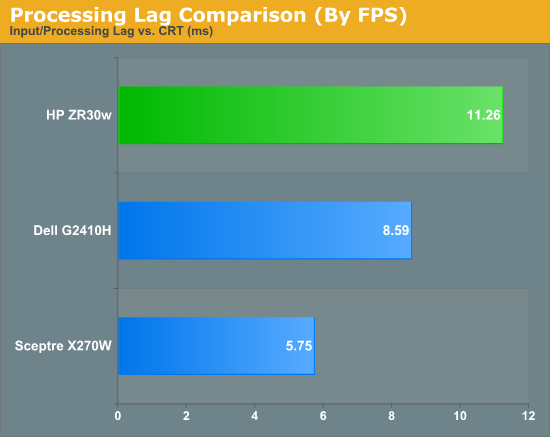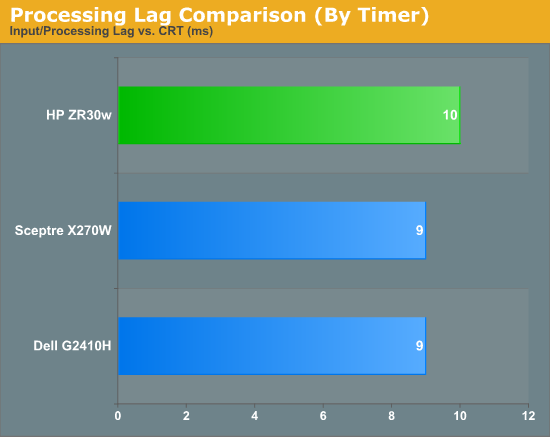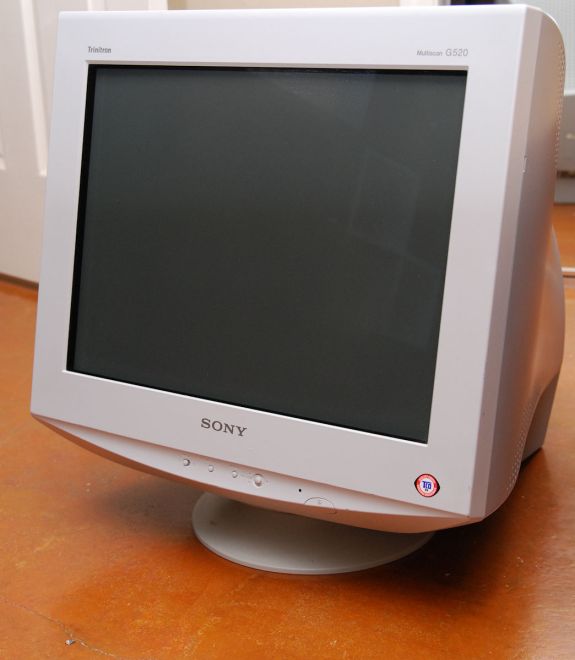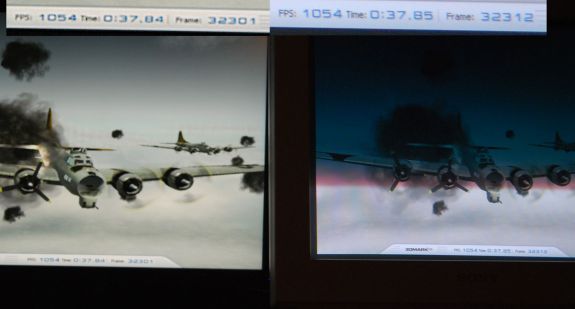A New 30" Contender: HP ZR30w Review
by Brian Klug on June 1, 2010 6:30 PM EST
Display Lag and Response Time
For gamers, display lag is a very real concern, and display processing is a nebulously reported (if at all) specification for just about all LCD displays. We’ve been over this before, but ultimately, what matters isn’t GTG, full on, full off pixel response times, or what’s reported on the spec sheet, but the holistic latency of the monitor compared to something we can all agree is lag-free. We previously used a baseline LCD and compared with it as our benchmark of no display lag. Previously we were using a 17” Princeton CRT - some of you were a bit underwhelmed by that monitor.
I spent some time visiting (I kid you not) almost every thrift store in town, and found myself a veritable cornucopia of uh... lovingly cared for CRTs to choose from. I settled on a much more modern looking Sony G520 20” CRT supporting a higher resolution and refresh rate. It’s still not what I’m ultimately looking for, but it’s better. Oh, and it cost a whopping $9. ;)
As I mentioned earlier, the only downside is that this means our old data is no longer a valid reference.
To compute the processing lag, I do two things. First, I watch for differences in the clock between the CRT and LCD, noting these whenever they are visible. I did this for 10 captures of the same sequence. Second, one can compute the processing difference by taking into account the FPS and the frame number difference.


We’re still evolving what we think the best way to measure processing lag is, and even using a CRT isn’t foolproof. In this case, I set the LCD and CRT refresh rates to 60 Hz so both in theory grab the same frame from the GPU’s framebuffer. In practice, it’s likely that they just aren’t, explaining the difference. As we process more LCDs, we’ll be able to tell, but the processing lag we’ve measured from all three monitors this far is totally acceptable.
I played a number of FPS titles and RTS games on the display, and never noticed any display processing lag or ghosting to speak of. If you’re going to use a 30” panel for gaming, the ZR30w seems to be just as good as any.
In the ghosting images I snapped, I usually only saw two frames. The dominant frame, and the preceding frame. This is very surprising, since we’re used to seeing three. But all throughout the images I snapped, only two frames are visible. This is very impressive panel response.













95 Comments
View All Comments
ranplett - Saturday, July 16, 2011 - link
I've purchased this monitor, and returned it thinking it was defective. The second one I received was exactly the same. The monitor was calibrated several times with both the Spyder 3 Pro and i1 Display LT, and it exhibits banding in bright colored gradients, and a VERY obvious difference in tone from the top left to the bottom right. The top left has a blue/green color cast, while the bottom right is far more pinkish. I'm comparing it to a HP LP2475w (also calibrated). The HP 24" is very uniform and has no banding issues.I was really hoping this is a good montior considering the price, but it really isn't good for critical color work (photogrpahy/video). The review on this site claims that it is very accurate but I disagree.
At this point it looks like I'm going to ask to return it in exchange for a NEC 27". The NEC 30" is $1000 more!
deon - Thursday, September 1, 2011 - link
thanks for your comment mate! i was looking to buy it for color work, but after reading your review, i will probably go with NEC. It bums me out that NEC does not have a zero dead pixel return policy on their 2 grand monitors.deon - Wednesday, August 31, 2011 - link
The price difference between HP 30 and NEC 30 is over 1200$!HP is around 1300$ and NEC 30 is over 2500$, but when i looked at the stats and numbers provided here, it seems like NEC is not worth of spending extra 1200$ and HP can be very good enough for doing professional color work (vfx compositing, color grading, photography).
Is that so, or am i delusional? Can you please comment/clarify why i should or should not spend extra 1200$ on NEC, when this HP performs almost as good. Looking forward for any replies and suggestions!
walkswithmighty - Tuesday, September 20, 2011 - link
I just thought I would chime in, and let you know that I just got this adapter today and was excited to try it on my ZR30W: http://www.amazon.com/gp/product/B004I6IYSM ( startech hdmi to dp powered adapter )does not work with this monitor and the xbox 360 hdmi output. I hope that this helps anyone that wants to try this adapter out, in order to try and get a hdmi source to work on the display port of this monitor.jonsinache - Tuesday, January 22, 2019 - link
I just bought this monitor used last month and it still works great.